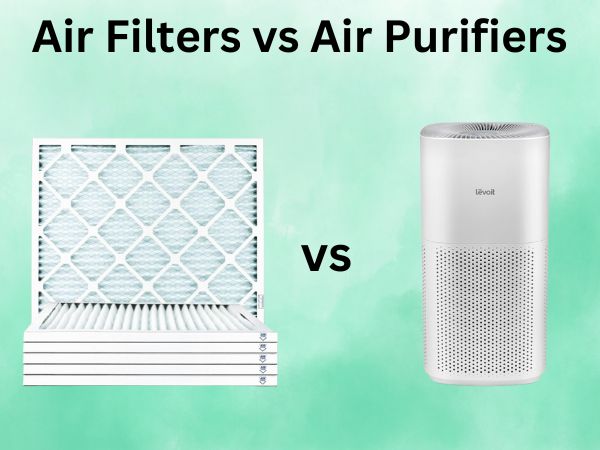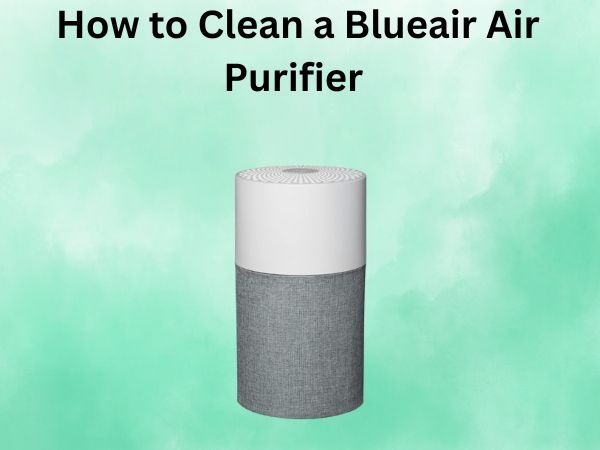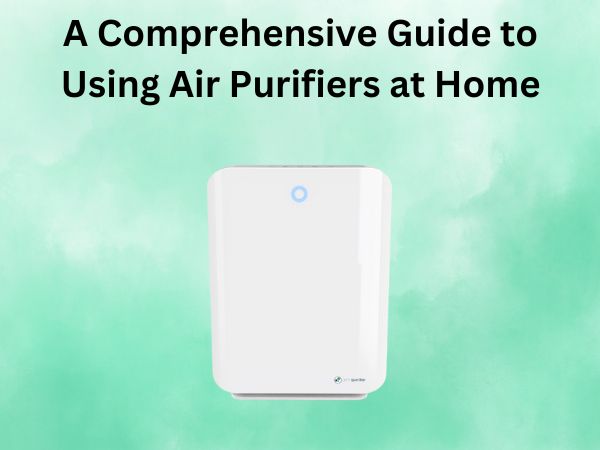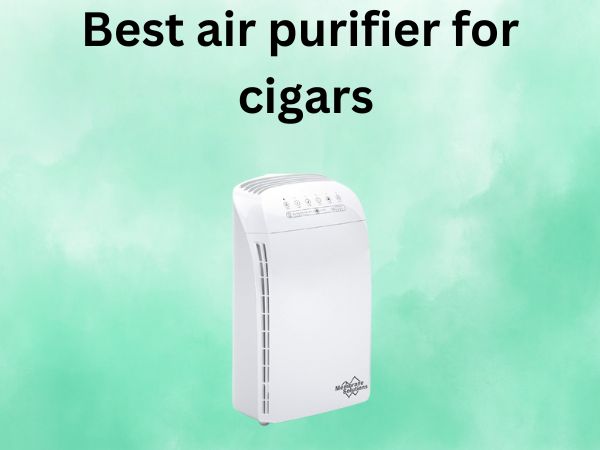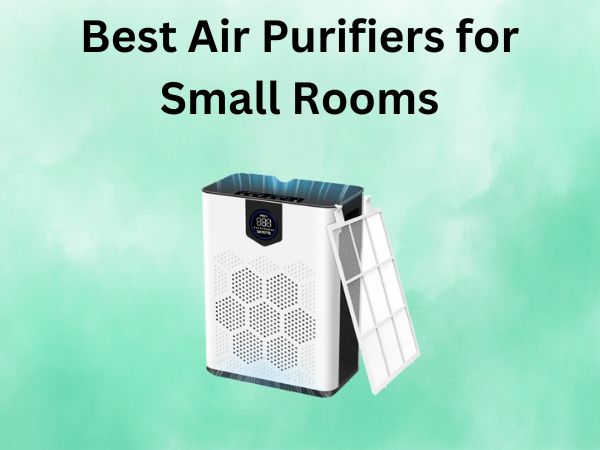Air Filters vs Air Purifiers: Which Is Best for Your Home?
Are you confused about whether you need an air filter, an air purifier, or maybe even both? You’re not alone. With increasing concerns about indoor air quality, many homeowners find themselves at this crossroads, trying to figure out the best solution for cleaner air at home.
In this comprehensive guide, we’ll break down everything you need to know about air filters versus air purifiers—how they work, their differences, and which one might be the right choice for your specific needs. By the end, you’ll have all the information you need to make an informed decision about improving your indoor air quality.
Table of Contents
Understanding the Basics of Air Filtration
Before diving into comparisons, let’s establish a solid foundation by understanding what these devices actually are and how they function in your home.
What Exactly Are Air Filters?
Air filters are passive components that are typically installed as part of your home’s HVAC (Heating, Ventilation, and Air Conditioning) system. Think of them as gatekeepers that trap particles as air passes through your heating and cooling system. Most homes already have some form of air filter in place—that rectangular cardboard-framed filter you replace every few months is doing important work behind the scenes.
How Do Air Filters Work?
The concept is beautifully simple: air filters create a physical barrier that catches particulates as air flows through your ventilation system. When your heating or cooling system pulls in air, it must first pass through this filter, which traps dust, pet dander, and other particles before the air continues on its journey through your home.
It’s a passive process—the filter doesn’t actively draw air in but rather cleans the air that’s already being circulated by your HVAC system. This means the effectiveness of your air filter is partly dependent on how often your system runs.
Common Types of Air Filters
Not all air filters are created equal. There’s quite a range available, each with different capabilities:
- Fiberglass Filters: These basic, inexpensive filters catch large particles but let smaller ones pass through. They’re primarily designed to protect your HVAC equipment rather than improve air quality.
- Pleated Filters: With more surface area than flat fiberglass filters, these catch more particles, including some allergens. The more pleats, generally the better the filtration.
- HEPA Filters for HVAC: These high-efficiency filters can capture up to 99.97% of particles as small as 0.3 microns. However, they may restrict airflow in some HVAC systems not designed for such dense filtration.
- Electrostatic Filters: These use self-charging fibers to attract and trap particles. They’re available in both disposable and reusable versions.
- Washable Filters: These reusable filters can be cleaned and reinstalled, making them more environmentally friendly, though they typically offer moderate filtration capabilities.
The filtration efficiency of these different types is often measured using the MERV rating (Minimum Efficiency Reporting Value), with higher numbers indicating better filtration of small particles.
Diving Into Air Purifiers
Now that we understand air filters, let’s explore their more active counterparts—air purifiers.
What Are Air Purifiers and Their Purpose?
Unlike filters that work within your HVAC system, air purifiers are standalone units designed specifically to clean the air in a given space. They actively draw in air, clean it using one or more types of filtration technology, and then recirculate the cleaned air back into the room.
Air purifiers are purpose-built for improving air quality rather than protecting equipment. They’re designed to target a wide range of airborne pollutants, including some that standard HVAC filters might miss.
Technologies Behind Air Purification
Air purifiers employ various technologies to clean your air, often combining multiple approaches in a single unit:
HEPA Filtration
The gold standard in air purification is HEPA (High-Efficiency Particulate Air) filtration. True HEPA filters must meet strict standards—capturing at least 99.97% of particles as small as 0.3 microns. This includes most allergens, dust, pollen, mold spores, and even some bacteria.
HEPA filters work through a combination of interception (particles sticking to fibers), impaction (particles crashing into fibers), and diffusion (tiny particles moving erratically and eventually contacting fibers).
Activated Carbon Filters
While HEPA excels at capturing particulates, it doesn’t do much for odors or gaseous pollutants. That’s where activated carbon comes in. These filters contain specially treated carbon with millions of tiny pores that adsorb gases, volatile organic compounds (VOCs), and odors.
If you’re concerned about cooking smells, pet odors, or chemical fumes from cleaning products, an air purifier with an activated carbon component is essential.
UV Light Technology
Some premium air purifiers incorporate ultraviolet light to kill or inactivate microorganisms like bacteria, viruses, and mold spores. The UV-C light damages the DNA of these microorganisms, preventing them from reproducing.
It’s worth noting that UV technology is most effective when airflow is slowed down enough to give the light sufficient exposure time to the passing air.
Ionizers and Electronic Air Purifiers
These technologies work by electrically charging air particles, causing them to attach to surfaces in your home or to collection plates within the purifier. While effective at removing certain particles, some ionizers may produce ozone as a byproduct, which can be a respiratory irritant.
Modern electronic air purifiers have largely addressed this concern, but it’s still something to be aware of when shopping for air purification systems.
Key Differences Between Air Filters and Purifiers
Now that we understand how both systems work, let’s compare them directly across several important factors:
Installation and Maintenance Requirements
Air Filters:
- Installed within your existing HVAC system
- Require regular replacement (typically every 1-3 months)
- Installation is usually a simple DIY task
- No additional electricity usage
- Relatively inexpensive to maintain
Air Purifiers:
- Standalone units that require floor or shelf space
- Need an electrical outlet to operate
- Filter replacements vary by model (typically every 3-12 months)
- Some parts may need periodic cleaning
- Consume electricity whenever running
- Generally higher maintenance costs over time
Coverage Area and Effectiveness
Air Filters:
- Clean air throughout the entire home, wherever air ducts reach
- Effectiveness depends on your HVAC system’s air circulation
- Work only when your heating or cooling system is running
- Limited by the capabilities of your HVAC system
Air Purifiers:
- Clean air in a specific room or area (coverage area measured in square feet)
- Work independently of your HVAC system
- Can run continuously if desired
- Multiple units may be needed for whole-home coverage
- Can be moved from room to room as needed
Cost Comparison: Initial Investment and Long-term Expenses
Air Filters:
- Lower upfront cost ($10-$100 depending on quality)
- Replacement costs vary ($5-$50 every 1-3 months)
- No additional electricity costs
- May slightly increase HVAC energy usage if using high-MERV filters
Air Purifiers:
- Higher initial investment ($50-$1,000+ depending on features and coverage)
- Filter replacement costs ($20-$200 annually)
- Ongoing electricity consumption ($30-$200 annually depending on usage)
- May require multiple units for whole-home coverage
When to Choose an Air Filter
Ideal Scenarios for Air Filter Usage
Air filters are likely your best option when:
- You want whole-home coverage without multiple devices
- You’re on a tight budget for both initial investment and ongoing costs
- You have limited space and don’t want standalone units
- You mainly need to filter common household dust and allergens
- You want a passive solution that doesn’t require much thought after installation
For many homeowners, upgrading to a better quality HVAC filter represents the best value proposition for improving indoor air quality with minimal fuss.
Limitations of Air Filters
However, air filters do have some significant limitations:
- They only work when your HVAC system is running
- They may not adequately address odors or gaseous pollutants
- Very high-efficiency filters can restrict airflow, potentially stressing your HVAC system
- They offer limited customization for specific air quality concerns
- They can’t be easily moved to problem areas
When to Choose an Air Purifier
Best Use Cases for Air Purifiers
Air purifiers shine in these situations:
- You have specific health concerns like allergies, asthma, or other respiratory conditions
- You need to address specific pollutants like smoke, pet dander, or VOCs
- You want targeted air cleaning in certain rooms (like bedrooms while sleeping)
- You rent your home and can’t modify the HVAC system
- You need air cleaning when your HVAC isn’t running (like during mild weather)
- You want more control over your air quality solution
- You have concerns about gaseous pollutants or odors that standard filters don’t address
Many users report significant improvements in allergy symptoms and overall comfort after adding a quality air purifier to their bedroom or living space.
Drawbacks of Air Purification Systems
Air purifiers aren’t perfect either:
- Higher upfront and ongoing costs
- Limited coverage area per unit
- Take up floor or surface space
- Produce some noise when operating
- Require electricity to function
- Need regular filter replacements and maintenance
Can You Use Both Systems Together?
Creating a Comprehensive Air Quality Strategy
For many homes, the ideal approach is actually a combination of both systems:
- Use quality HVAC filters (MERV 8-13) as your first line of defense, cleaning air throughout your entire home whenever your system runs.
- Add targeted air purifiers in spaces where you spend the most time (bedrooms, home office) or where specific concerns exist (kitchen for cooking odors, living room for pet dander).
This two-pronged approach often delivers the best overall results, providing whole-home baseline filtration with enhanced cleaning in the areas that matter most to you.
Remember that air quality is about more than just filtration. Consider these complementary strategies:
- Regular vacuuming with a HEPA-equipped vacuum
- Controlling humidity levels (30-50% is ideal)
- Minimizing use of VOC-emitting products
- Ensuring adequate ventilation when possible
- Addressing sources of pollutants directly
Making the Right Choice for Your Specific Needs
Considering Your Health Requirements
Your health concerns should be a primary factor in your decision:
- For allergy and asthma sufferers: Consider a combination approach with high-MERV filters in your HVAC system and a HEPA air purifier in your bedroom.
- For general dust reduction: A quality HVAC filter (MERV 8-11) might be sufficient.
- For chemical sensitivities: Prioritize air purifiers with substantial activated carbon filters.
- For households with infants or elderly members: Consider more robust filtration in the areas where they spend the most time.
Evaluating Your Living Environment
Your home’s characteristics also matter:
- Home size: Larger homes may benefit more from upgraded HVAC filtration due to cost considerations of multiple purifiers.
- HVAC system capacity: Some systems can’t handle very high-efficiency filters without airflow restrictions.
- Problem areas: Kitchens, pet areas, or hobby rooms with specific pollutants might need targeted purification.
- Climate: If you rarely run your HVAC system, air purifiers become more important.
- Rental vs. owned home: Renters may have limited ability to modify HVAC systems, making purifiers more practical.
Frequently Asked Questions
1. Will an air purifier help with my allergies better than just changing my HVAC filter?
For allergy sufferers, a dedicated air purifier with a true HEPA filter placed in your bedroom will typically provide more relief than just an HVAC filter. HEPA purifiers can capture smaller allergen particles and clean the air in your immediate breathing zone continuously, even when your HVAC system isn’t running. However, using both in tandem—a good HVAC filter for whole-home baseline protection and a HEPA purifier in your bedroom—often delivers the best results.
2. How often do I really need to replace my air filters and purifier filters?
HVAC air filters typically need replacement every 1-3 months, depending on your home environment (pets, dust levels, etc.) and the filter thickness. For air purifiers, HEPA filters usually need replacement every 6-12 months, while activated carbon filters may need more frequent changes (3-6 months) if addressing strong odors or chemicals. Always follow the manufacturer’s recommendations, but be prepared to change more frequently if you have pets, live in a dusty area, or run your systems continuously.
3. Are portable air purifiers worth the investment if I already have a good HVAC filter?
Yes, they can be worth it for several reasons: They provide focused cleaning in specific rooms, work even when your HVAC system isn’t running, can address specific concerns like odors or VOCs with specialized filtration, and can be moved to different areas as needed. For people with allergies, asthma, or who spend extended periods in specific rooms, the targeted approach of a purifier complements whole-home filtration effectively.
4. Can air purifiers remove viruses and bacteria from the air?
Many high-quality air purifiers with true HEPA filtration can capture some viruses and bacteria, though effectiveness varies. Units that combine HEPA filtration with UV-C light technology offer enhanced capabilities against microorganisms. However, no air purifier can guarantee complete protection from infectious diseases. They should be viewed as one part of a broader strategy that includes proper ventilation, hygiene practices, and following public health guidelines during outbreaks.
5. Why does my air purifier make noise, and is there anything I can do about it?
Air purifiers create noise because they contain fans to move air through their filtration systems. The noise level varies greatly between models and typically increases at higher fan speeds. To minimize noise disruption: Choose models specifically designed for quiet operation, run the purifier on high when you’re away and lower when you’re present, place the unit away from sleeping areas if possible, or choose a unit with a quiet “sleep mode” feature specifically for nighttime use. Some premium models operate at whisper-quiet levels even at moderate settings.
Conclusion
The choice between air filters and air purifiers isn’t actually an either/or decision for most homes. Both have distinct advantages and limitations, and many households benefit from a strategic combination of the two.
If you’re just starting to address air quality concerns, a sensible approach is to first upgrade your existing HVAC filters to the highest MERV rating your system can handle efficiently. Then, evaluate whether specific rooms or concerns warrant adding dedicated air purifiers.
Remember that no filtration solution is perfect, and addressing the sources of indoor air pollution is always your best first step. Regular cleaning, proper ventilation, and minimizing pollutant sources will enhance the effectiveness of whatever filtration solution you choose.
By understanding the differences between these technologies and thoughtfully applying them to your specific situation, you can breathe easier knowing you’ve made informed choices about your home’s air quality.

